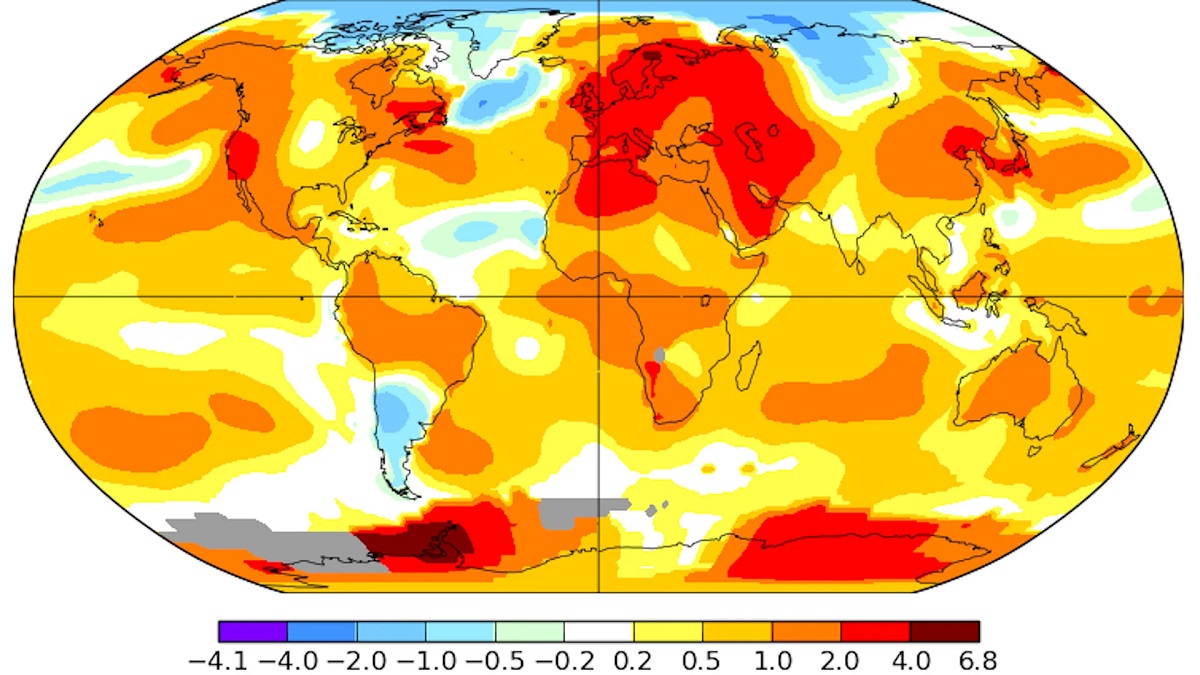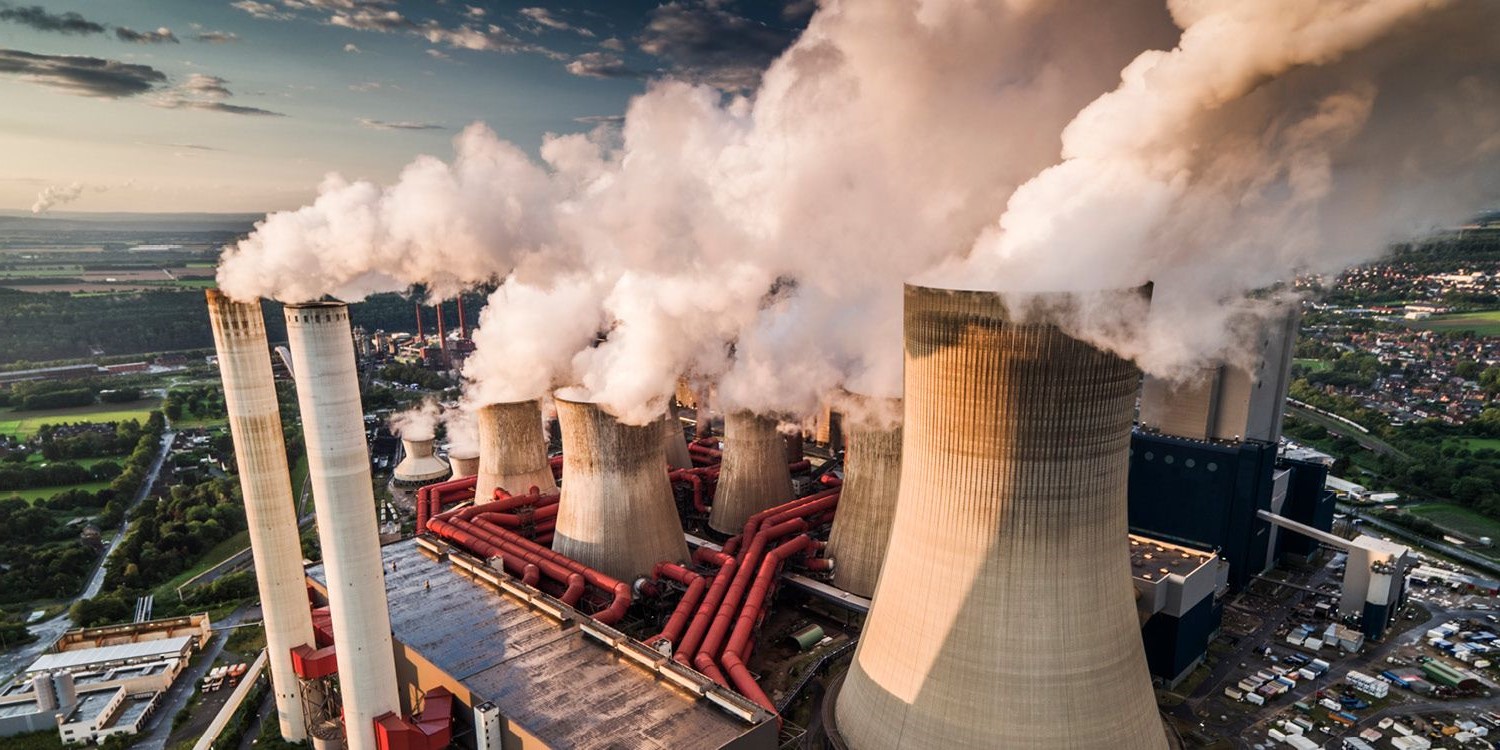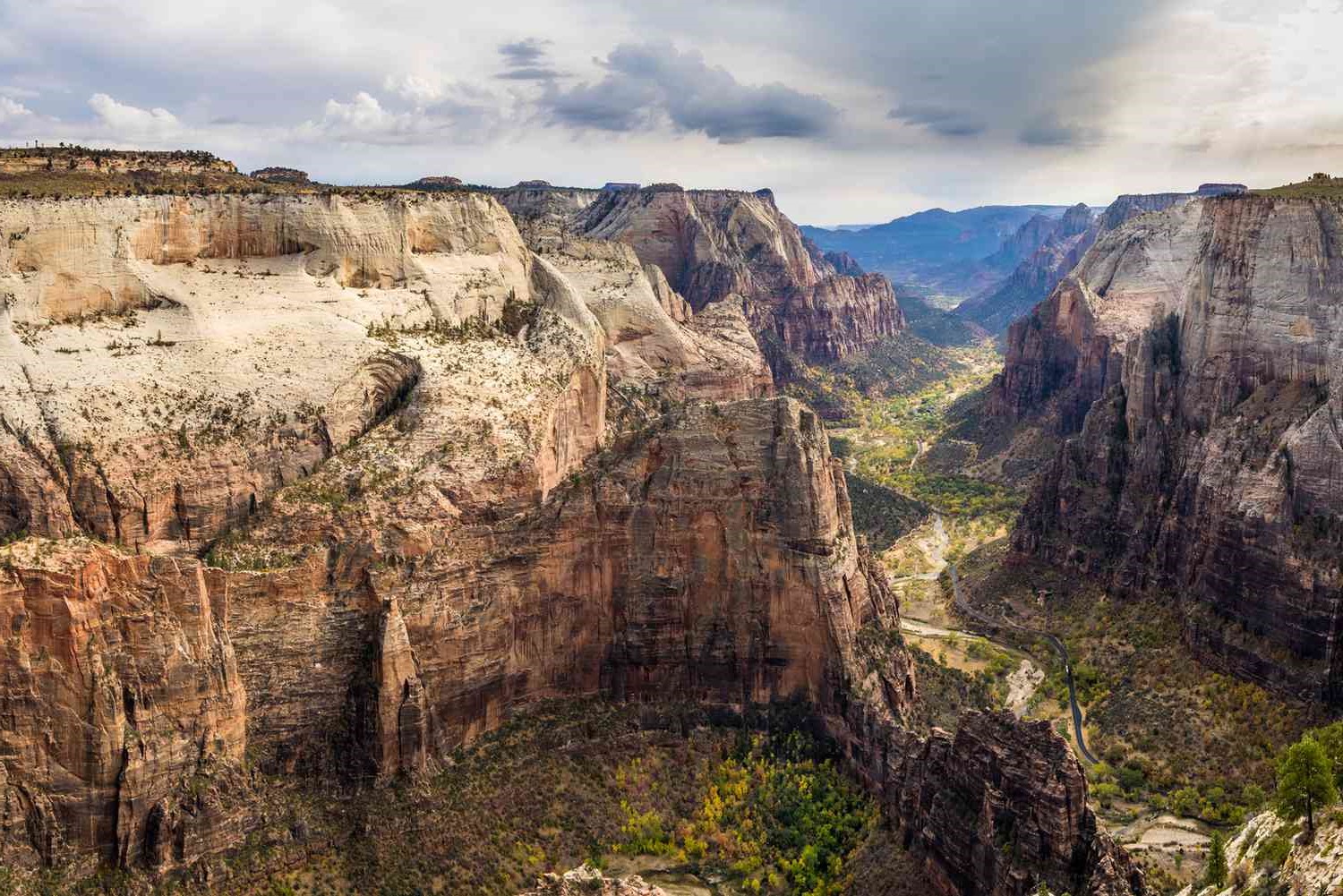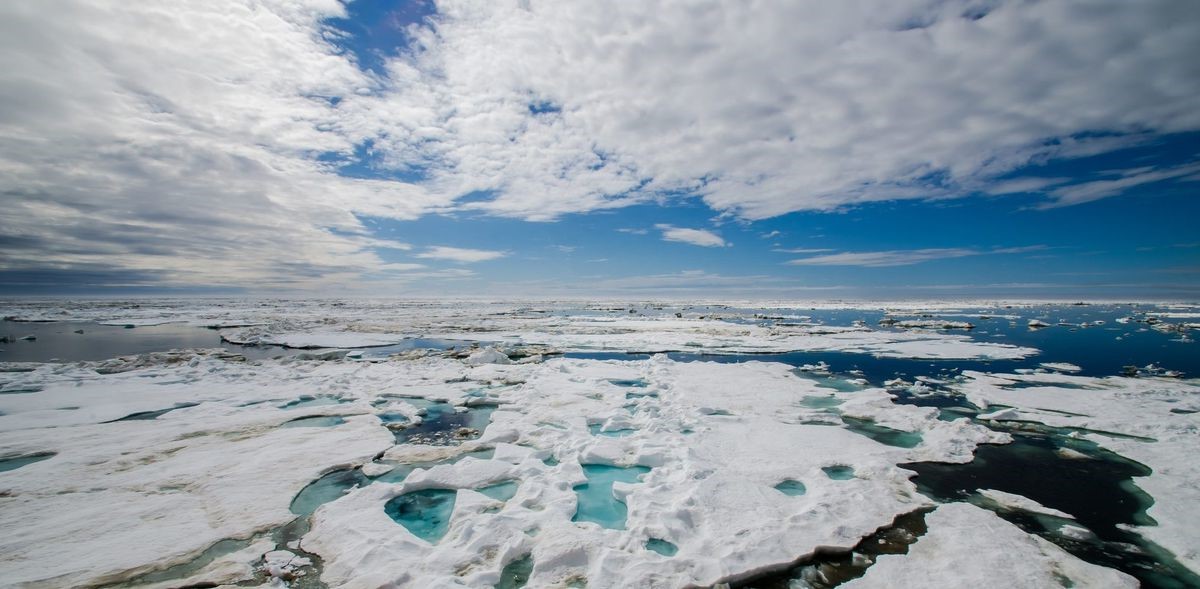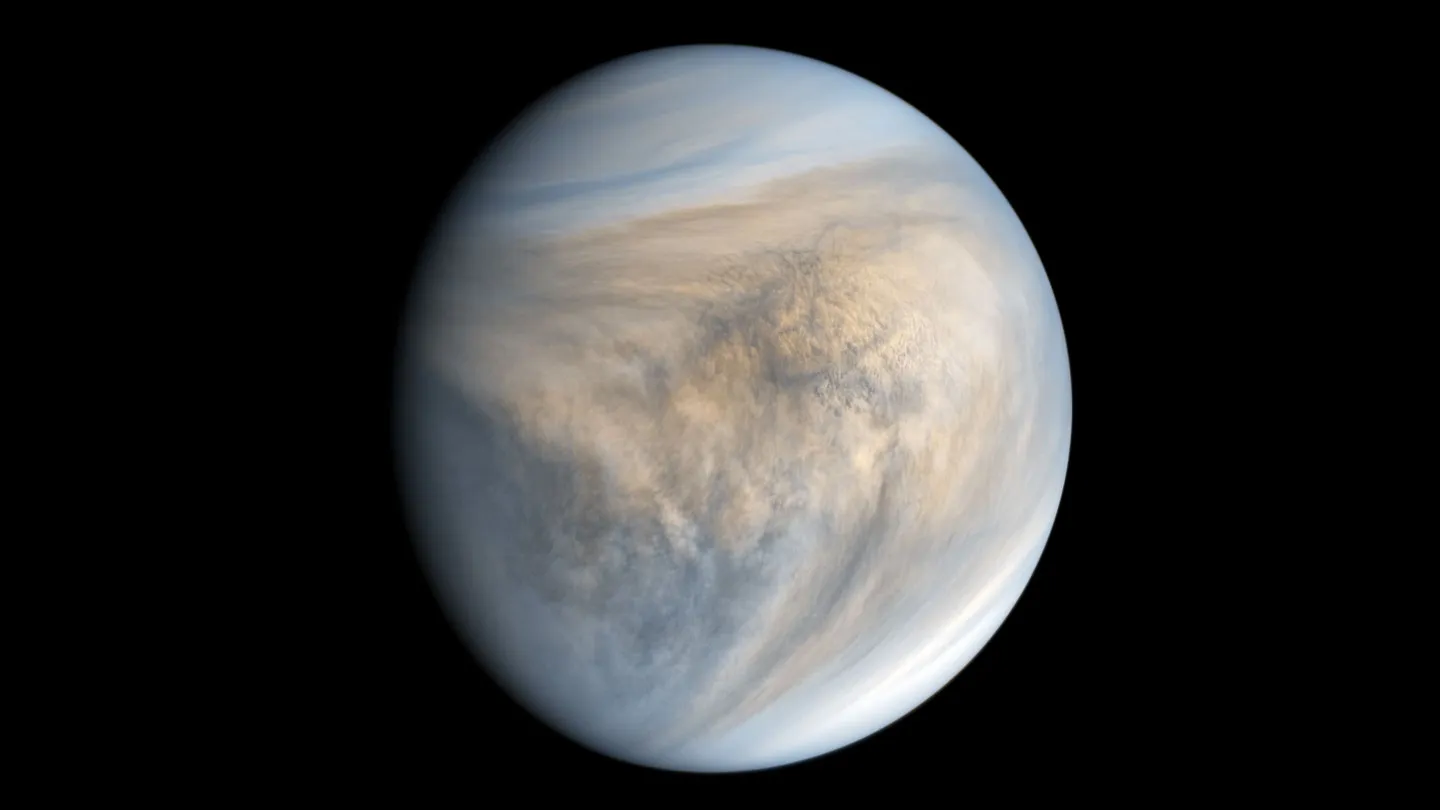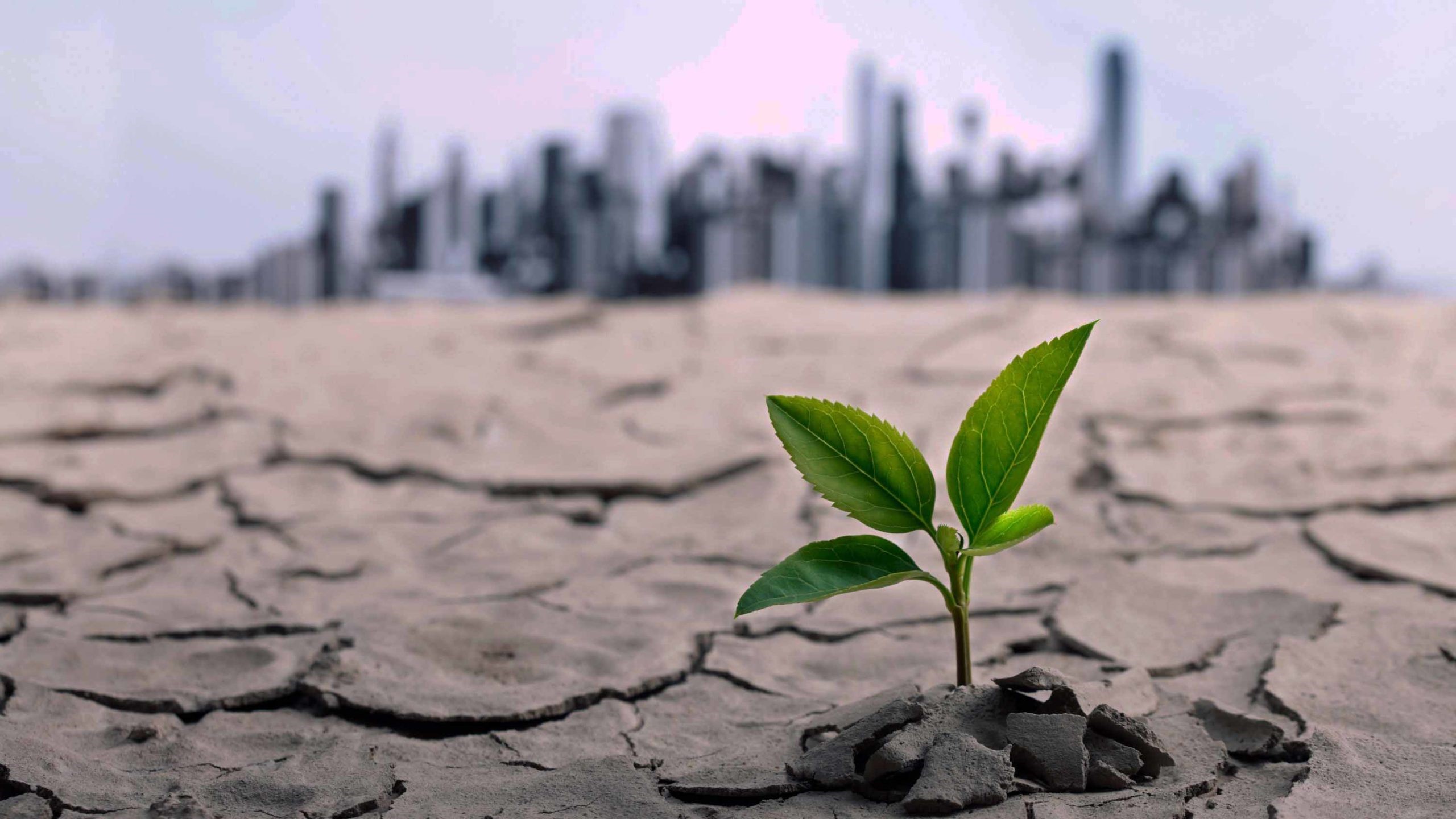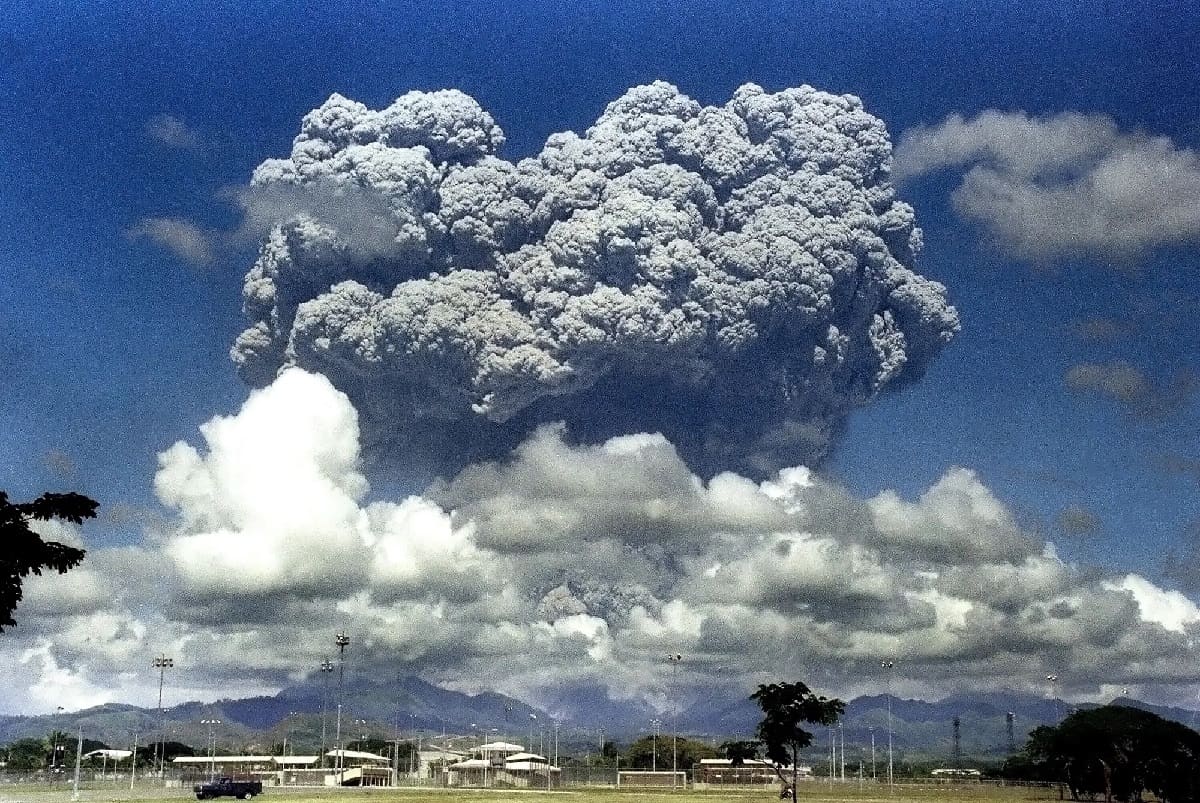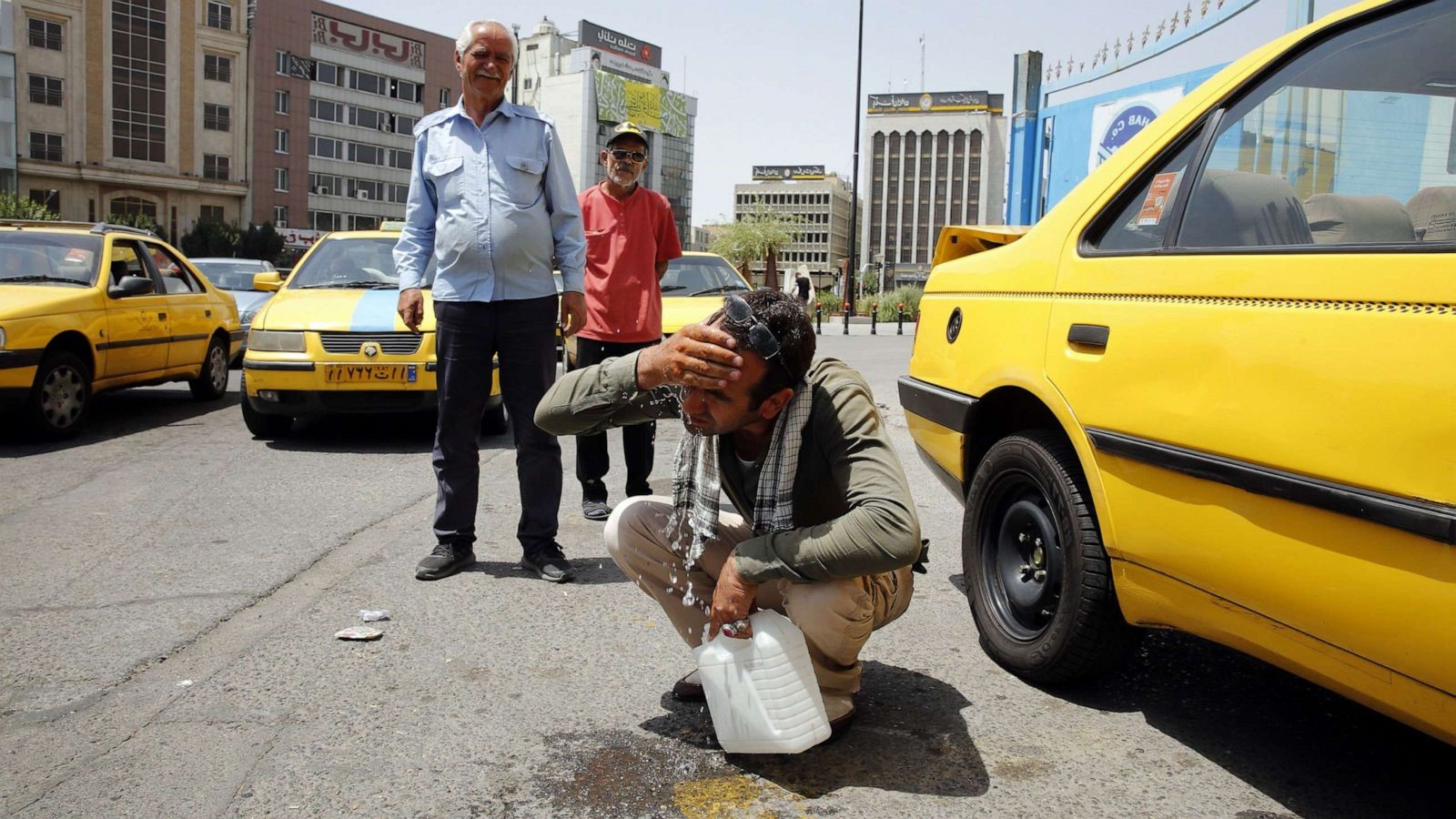Home>Weather and Climate>Understanding The Recent Plunge In Global Temperatures
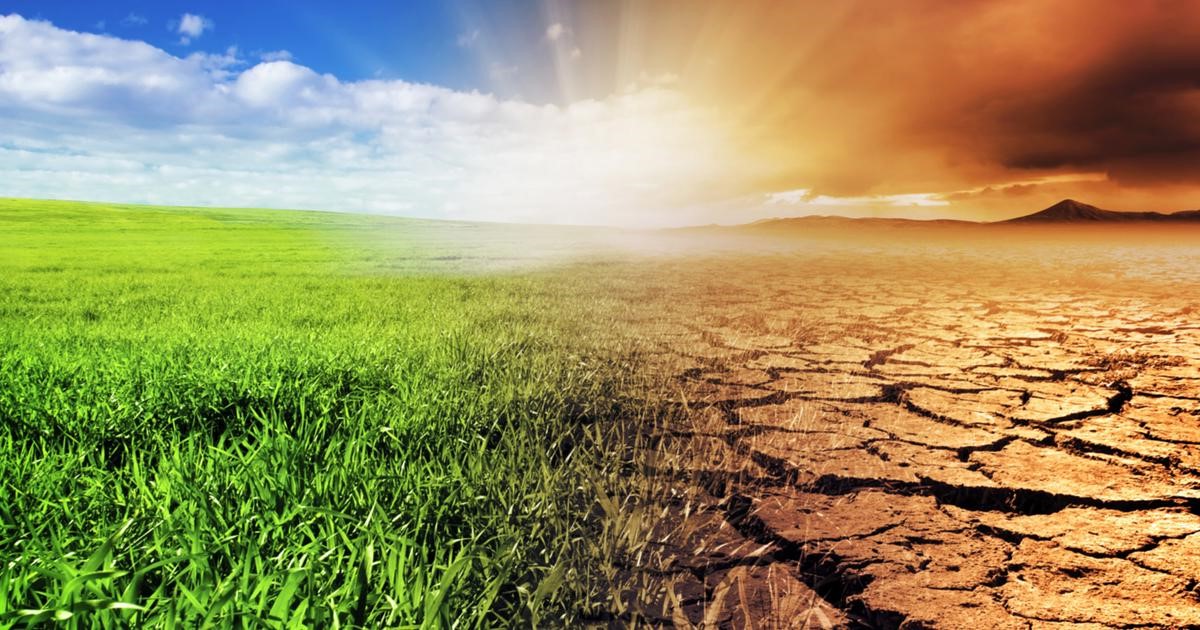

Weather and Climate
Understanding The Recent Plunge In Global Temperatures
Published: March 4, 2024
Gain insights into the recent global temperature drop and its impact on weather and climate. Stay informed about the changing environmental conditions.
(Many of the links in this article redirect to a specific reviewed product. Your purchase of these products through affiliate links helps to generate commission for Temperatures.com, at no extra cost. Learn more)
Table of Contents
Factors contributing to the recent plunge in global temperatures
The recent plunge in global temperatures has been influenced by a confluence of factors, each playing a significant role in shaping the Earth's climate. These factors, when examined collectively, provide valuable insights into the complex dynamics of our planet's temperature regulation. Here are the key contributors to the recent cooling trend:
-
Solar Activity: The sun, our primary source of heat and light, experiences natural cycles of activity. The recent decrease in solar activity, marked by a reduction in sunspots and solar flares, has led to a decrease in the amount of solar radiation reaching the Earth. This diminished solar output has contributed to the cooling of the planet's surface and lower atmosphere.
-
Volcanic Eruptions: Volcanic eruptions release large quantities of ash and sulfur dioxide into the atmosphere. These particles can linger in the stratosphere for an extended period, reflecting sunlight away from the Earth's surface and causing a cooling effect. The eruption of major volcanoes in recent years has had a discernible impact on global temperatures.
-
Oceanic Oscillations: The cyclical variations in ocean temperatures and currents, such as the Pacific Decadal Oscillation and the Atlantic Multidecadal Oscillation, can exert a profound influence on global climate patterns. These oscillations can result in shifts in atmospheric circulation and temperature distribution, contributing to fluctuations in global temperatures.
-
Aerosol Emissions: Human activities, particularly industrial processes and the burning of fossil fuels, release aerosols into the atmosphere. These tiny particles can act as cloud condensation nuclei, influencing cloud formation and properties. Changes in aerosol concentrations can impact the Earth's energy balance, leading to regional and global temperature changes.
-
Greenhouse Gas Levels: While the recent cooling trend may seem counterintuitive in the context of ongoing climate change, it is essential to recognize that the increase in greenhouse gas concentrations, particularly carbon dioxide, continues to exert a long-term warming influence on the planet. However, the short-term cooling effects of other factors have temporarily offset some of the warming attributed to greenhouse gases.
Understanding the interplay of these diverse factors is crucial for comprehending the intricacies of global temperature dynamics. By delving into the multifaceted nature of these contributors, scientists can refine their understanding of Earth's climate system and its susceptibility to external influences.
Read more: Global Temperature Trends
Impact of the recent temperature drop on climate patterns
The recent temperature drop has reverberated across various facets of global climate patterns, instigating a cascade of effects that resonate with ecosystems, weather phenomena, and human activities. This abrupt cooling trend has set in motion a series of repercussions that warrant careful examination to grasp its far-reaching implications.
Disrupted Weather Patterns
The cooling of global temperatures has disrupted established weather patterns, leading to anomalies in precipitation, wind dynamics, and atmospheric circulation. Regions accustomed to specific climatic conditions have experienced unanticipated shifts, potentially impacting agricultural cycles, water resource management, and the frequency of extreme weather events. These disruptions underscore the intricate interplay between temperature variations and the delicate equilibrium of Earth's climate systems.
Altered Ecosystem Dynamics
Ecosystems, finely attuned to prevailing climatic conditions, have encountered challenges in adapting to the sudden temperature drop. Flora and fauna, particularly in regions sensitive to temperature fluctuations, may face adjustments in migration patterns, reproductive behaviors, and overall ecological balance. The repercussions of these changes extend beyond individual species, influencing biodiversity, food webs, and the resilience of ecosystems in the face of climatic perturbations.
Implications for Cryospheric Regions
The recent cooling trend has implications for cryospheric regions, including polar ice caps, glaciers, and permafrost landscapes. While these areas have been subject to long-term warming and associated melting, the recent temperature drop introduces a contrasting dynamic. The potential ramifications encompass alterations in ice accumulation, sea ice extent, and the stability of polar ecosystems. These changes not only impact local environments but also contribute to broader shifts in global sea levels and oceanic circulation patterns.
Societal and Economic Considerations
From a societal and economic perspective, the impact of the temperature drop on climate patterns is multifaceted. Sectors reliant on stable climatic conditions, such as agriculture, forestry, and tourism, may confront challenges in adapting to the altered climate dynamics. Furthermore, infrastructure planning, energy demand, and resource management could be influenced by the evolving climate patterns, necessitating adaptive strategies to mitigate potential vulnerabilities.
Scientific Inquiry and Understanding
The recent temperature drop serves as a focal point for scientific inquiry, prompting researchers to delve into the underlying mechanisms driving this phenomenon. By scrutinizing the interconnections between atmospheric processes, oceanic dynamics, and solar influences, scientists can refine their understanding of climate variability and enhance predictive capabilities. This pursuit of knowledge is pivotal in elucidating the intricate interdependencies within Earth's climate system.
In essence, the impact of the recent temperature drop on climate patterns extends beyond immediate meteorological shifts, permeating ecological, societal, and scientific realms. By comprehensively assessing these impacts, stakeholders can gain valuable insights into the multifaceted repercussions of global temperature fluctuations, fostering informed decision-making and adaptive responses in a dynamic climatic landscape.
Scientific explanations for the sudden decrease in global temperatures
The sudden decrease in global temperatures has prompted intense scientific scrutiny, leading to the identification of several compelling explanations rooted in the intricate dynamics of Earth's climate system. These scientific elucidations offer valuable insights into the multifaceted mechanisms driving the unprecedented cooling trend, shedding light on the interplay of natural and anthropogenic factors. Here are the primary scientific explanations for this phenomenon:
Solar Variability
The variability in solar activity, characterized by fluctuations in solar radiation and sunspot cycles, has emerged as a pivotal factor contributing to the recent cooling of global temperatures. Solar irradiance, the amount of solar energy reaching the Earth, undergoes cyclical changes that can influence the planet's climate. The current phase of reduced solar activity, marked by diminished sunspot numbers and subdued solar flares, has resulted in a diminished influx of solar radiation, exerting a cooling effect on the Earth's atmosphere and surface.
Volcanic Aerosols
The injection of aerosols into the stratosphere following volcanic eruptions has a discernible impact on global temperatures. Erupting volcanoes release copious amounts of ash and sulfur dioxide, which form aerosol particles that scatter and absorb incoming solar radiation. This scattering of sunlight leads to a temporary cooling effect on the Earth's surface. The cumulative influence of recent volcanic activity, including notable eruptions in various regions, has contributed to the observed decrease in global temperatures.
Oceanic Oscillations
The cyclical oscillations in ocean temperatures and currents, such as the Pacific Decadal Oscillation (PDO) and the Atlantic Multidecadal Oscillation (AMO), play a pivotal role in shaping global climate patterns. These oscillations can induce shifts in atmospheric circulation, altering temperature distributions across different regions. The recent phase of oceanic oscillations has been associated with modifications in heat distribution and atmospheric dynamics, contributing to the overall cooling trend observed in various parts of the world.
Aerosol Emissions
Human activities, particularly industrial processes and the combustion of fossil fuels, release aerosols into the atmosphere. These aerosols can influence cloud properties and atmospheric dynamics, impacting the Earth's energy balance and regional temperature patterns. Changes in aerosol concentrations, coupled with their interactions with clouds, have contributed to localized and regional cooling effects, adding to the broader context of global temperature fluctuations.
Greenhouse Gas Dynamics
While the recent cooling trend may seem paradoxical in the context of ongoing climate change, it is essential to consider the complex interplay of greenhouse gas dynamics. The increase in greenhouse gas concentrations, notably carbon dioxide, continues to exert a long-term warming influence on the planet. However, the short-term cooling effects associated with other factors have temporarily offset some of the warming attributed to greenhouse gases, contributing to the observed decrease in global temperatures.
In essence, the scientific explanations for the sudden decrease in global temperatures underscore the intricate interplay of natural and anthropogenic factors in shaping Earth's climate. By delving into these multifaceted explanations, scientists can enhance their understanding of the complex mechanisms governing global temperature dynamics, paving the way for informed assessments and proactive responses to evolving climatic trends.
Read more: Latest Global Temperature Trends In 2022
Potential implications for ecosystems and biodiversity
The recent plunge in global temperatures carries profound implications for ecosystems and biodiversity, permeating through the intricate tapestry of life on Earth. As temperature exerts a pervasive influence on ecological processes, the sudden cooling trend has set in motion a series of potential ramifications that warrant meticulous consideration.
Ecosystem Dynamics
Ecosystems, finely attuned to prevailing climatic conditions, may encounter disruptions in response to the abrupt temperature drop. Flora and fauna, particularly in regions sensitive to temperature fluctuations, could face challenges in adapting to the altered thermal environment. Such adjustments may manifest in shifts in species distributions, altered phenological patterns, and modified ecological interactions. The repercussions of these changes extend beyond individual species, influencing the structure and functioning of entire ecosystems.
Biodiversity Impacts
The impact of the temperature drop on biodiversity is multifaceted, encompassing both direct and cascading effects. Species with narrow thermal tolerances may experience heightened vulnerability, potentially leading to localized population declines or shifts in habitat suitability. Furthermore, the altered climate dynamics could influence the competitive dynamics among species, potentially reshaping community compositions and diversity gradients. The intricate web of biodiversity, encompassing genetic, species, and ecosystem diversity, may undergo nuanced adjustments in response to the changing thermal regime.
Cryospheric Ecosystems
Cryospheric ecosystems, including those in polar regions and high-altitude environments, are particularly susceptible to the ramifications of the temperature drop. These regions, characterized by unique assemblages of organisms adapted to cold environments, may face challenges in acclimating to the altered thermal conditions. The stability of ice-dependent ecosystems, such as those associated with polar sea ice and glaciers, could be impacted, potentially influencing the viability of specialized species and ecological processes reliant on these habitats.
Resilience and Adaptation
The capacity of ecosystems and biodiversity to withstand and adapt to the sudden temperature drop is a critical consideration. Resilient ecosystems may demonstrate the ability to buffer the impacts of temperature fluctuations, exhibiting adaptive responses that mitigate potential disruptions. However, the pace and magnitude of the cooling trend could outpace the adaptive capacity of certain ecosystems, leading to heightened vulnerability and potential ecological reorganization.
Conservation and Management
The implications of the temperature drop for ecosystems and biodiversity underscore the significance of proactive conservation and management strategies. Monitoring and assessing the responses of key species and ecosystems to the changing thermal regime is essential for informing targeted conservation interventions. Furthermore, adaptive management approaches that account for the dynamic interplay between temperature, ecological processes, and biodiversity dynamics are pivotal for fostering resilience in the face of climatic perturbations.
In essence, the potential implications of the recent temperature drop for ecosystems and biodiversity underscore the intricate interdependencies between climate dynamics and ecological resilience. By comprehensively evaluating these implications, stakeholders can glean valuable insights into the multifaceted repercussions of global temperature fluctuations, guiding informed conservation and management strategies in a dynamic and evolving climatic landscape.
Human activities and their role in the cooling trend
Human activities have contributed to the cooling trend through the release of aerosols into the atmosphere. Industrial processes, including the burning of fossil fuels and biomass, emit a diverse array of aerosol particles, such as sulfates, nitrates, and organic compounds. These aerosols can directly influence the Earth's energy balance by scattering and absorbing solar radiation, leading to localized and regional cooling effects. Additionally, aerosols can serve as cloud condensation nuclei, influencing cloud properties and longevity, thereby impacting regional and global climate patterns.
Furthermore, land-use changes, such as deforestation and agricultural practices, can indirectly contribute to the cooling trend. Alterations in land cover and land use can influence surface albedo, the amount of solar radiation reflected by the Earth's surface. Changes in albedo can modulate the absorption of solar energy, potentially leading to localized cooling effects in regions undergoing significant land-use modifications.
The release of aerosols and land-use changes, coupled with other anthropogenic influences, underscores the complex interplay between human activities and the global cooling trend. While the long-term trajectory of anthropogenic climate change continues to be dominated by the warming influence of greenhouse gases, the short-term cooling effects associated with aerosols and land-use changes have contributed to the observed decrease in global temperatures.
Understanding the role of human activities in the cooling trend is pivotal for comprehensively assessing the multifaceted dynamics of Earth's climate system. By elucidating the intricate interconnections between anthropogenic influences and global temperature fluctuations, scientists and policymakers can refine their understanding of the complex mechanisms governing climate variability, fostering informed assessments and proactive responses to evolving climatic trends.
